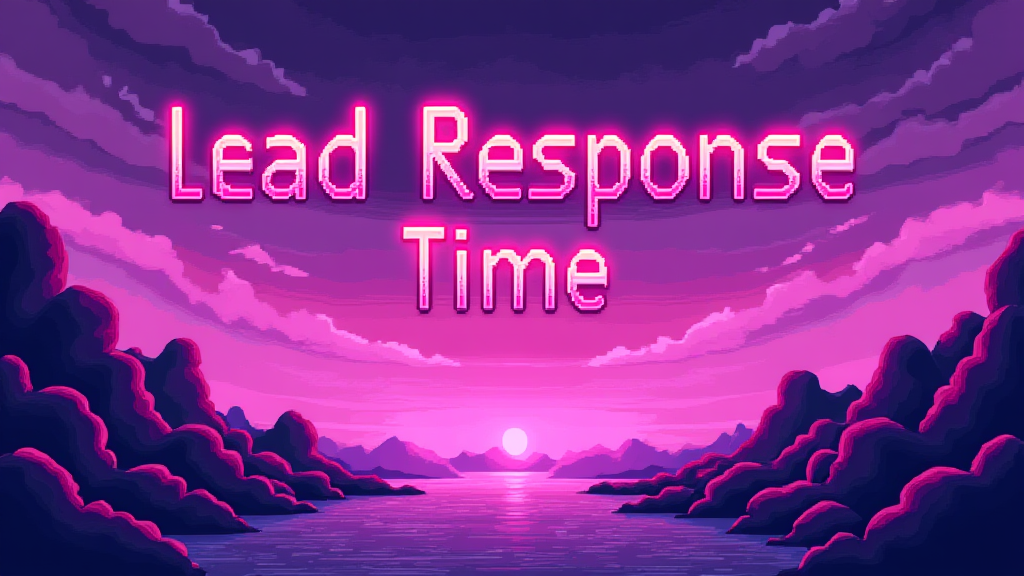Lead Response Time: Crucial Metric for Sales Success

Published on: October 01, 2024
Lead Response Time is a critical metric in sales and marketing that measures the duration between a prospect's initial inquiry or expression of interest and the first response from a company's sales or marketing team. This crucial timeframe can significantly impact conversion rates and overall sales performance.
Why Lead Response Time Matters 🕒
The importance of Lead Response Time cannot be overstated in today's fast-paced business environment. Quick response times can:
- Increase the likelihood of converting leads into customers
- Demonstrate your company's efficiency and customer-centric approach
- Give you a competitive edge in a crowded marketplace
- Improve overall customer satisfaction and experience
Lead Response Time Statistics 📊
Several studies have highlighted the significance of prompt lead response:
- Harvard Business Review study: Businesses that contacted potential customers within an hour of receiving queries were nearly 7 times as likely to have meaningful conversations with key decision-makers as firms that contacted the lead even an hour later.
- InsideSales.com research: The odds of qualifying a lead decrease by 21 times when taking 30 minutes to respond instead of 5 minutes.
Best Practices for Optimizing Lead Response Time ⚡
To improve your lead response time and boost conversion rates, consider implementing these strategies:
- Automate initial responses: Use marketing automation tools to send immediate acknowledgments to inquiries.
- Implement a lead routing system: Ensure leads are quickly assigned to the appropriate sales representatives.
- Set up real-time notifications: Alert sales teams instantly when new leads come in.
- Establish response time goals: Create and monitor KPIs for lead response times across your organization.
- Leverage CRM tools: Use customer relationship management systems to track and manage lead interactions efficiently.
Common Challenges in Reducing Lead Response Time 🚧
While the benefits of quick lead response times are clear, many organizations face challenges in implementation:
- High lead volume overwhelming sales teams
- Lack of proper tools or technology
- Inefficient lead qualification processes
- Poor coordination between marketing and sales departments
Lead Response Time Formula
The basic formula for calculating Lead Response Time is:
\[ \text{Lead Response Time} = \text{Time of First Response} - \text{Time of Lead Creation} \]
This calculation can be done in minutes, hours, or days, depending on your business needs and typical response times.
Integrating Lead Response Time with Your Sales and Marketing Stack 🔧
To effectively manage and improve lead response times, consider integrating this metric into your existing sales and marketing tools:
- CRM systems: Use Salesforce or HubSpot to track and report on lead response times.
- Marketing automation: Implement tools like Marketo or Pardot to automate initial responses and lead routing.
- Analytics platforms: Utilize Google Analytics or similar tools to monitor website behavior and lead generation patterns.
By focusing on reducing lead response time, businesses can significantly enhance their sales performance and customer satisfaction. As you consider implementing strategies to improve this crucial metric, ask yourself:
- What is our current average lead response time?
- How can we streamline our lead routing process?
- What automation tools can we leverage to improve our response times?
- How can we better align our sales and marketing teams to handle leads more efficiently?
- What KPIs should we set for lead response time improvement?
For more insights, check out our lead conversion strategies and learn about the importance of conversion rates.
















